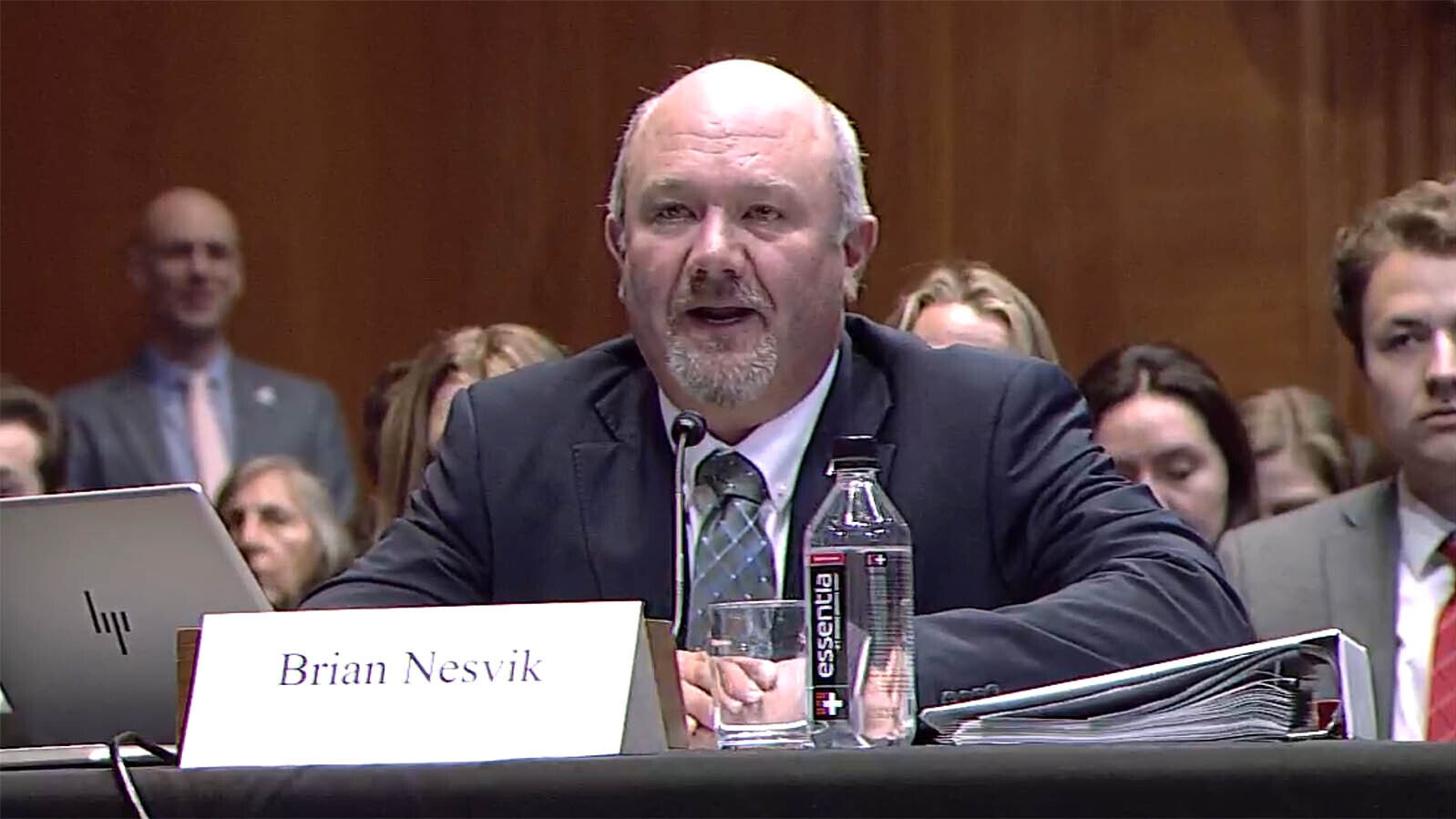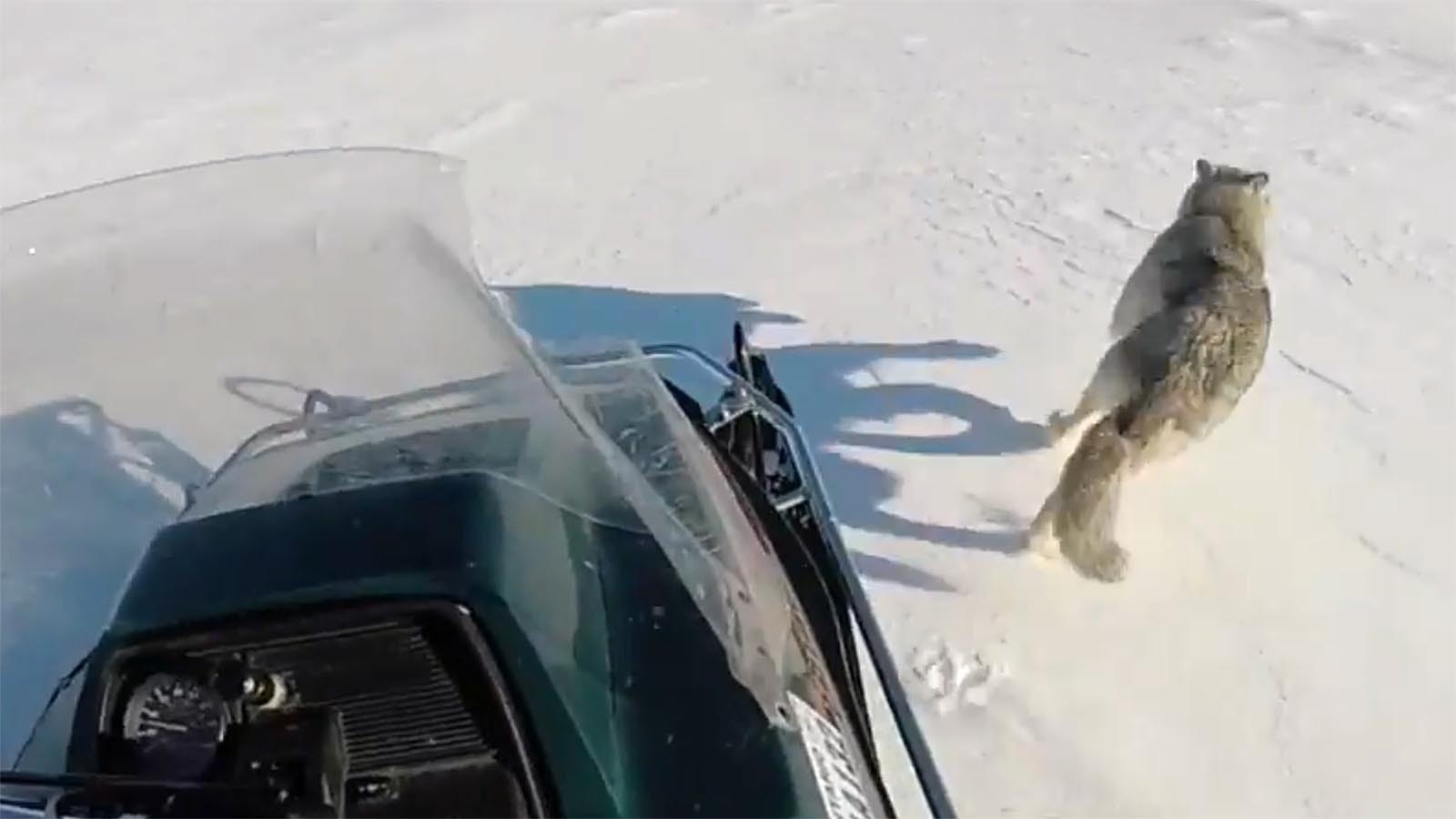On Tuesday, the Black Diamond Pool in Yellowstone National Park violently erupted. The force of the eruption sent rocks hundreds of feet into the air and destroyed the boardwalk that dozens of people had been standing on when it blew.
The Biscuit Basin boardwalk remains closed to visitors while geologists and National Park Service teams assess the damage and current behavior of Black Diamond Pool. While there are many questions in the aftermath, the forces that caused the dramatic eruption are well-known and understood.
What it wasn't was a sign of an imminent volcanic eruption in Yellowstone.
It wasn't volcanic at all.
"This was a hydrothermal explosion and did not involve the volcanic system at all," Mike Poland, scientist-in-charge of the Yellowstone Volcano Observatory, told Cowboy State Daily. "This kind of activity happens a couple of times a year, on average, somewhere in Yellowstone and can happen in any geyser basin in the park."
Hydrothermal, Not Volcanic
Hydrothermal explosions occur when water transitions into steam. Poland explained that the force of the Black Diamond Pool was caused by the volumetric (not volcanic) expansion of the water molecules during the transition.
"When water turns to steam, it expands over 1,000 times," he said. "When that happens in a confined space, the space can't hold the rapid expansion of steam and can cause explosions. It's a pressure cooker situation."
These "water flashes" happen constantly in Yellowstone. It's the primary force behind the eruptions of geysers like Old Faithful and Steamboat.
According to Poland, the difference between a typical Old Faithful eruption and the violent eruption of Black Diamond Pool is the underground plumbing system feeding the thermal features.
"Geysers have a well-worn conduit system that allows them to erupt," he said. "There was no conduit system that allows for that kind of eruption at Black Diamond Pool, so when the water flashed to steam, it ruptured the container, and you got the explosion."
However, the eruption in the caldera of one of the world's largest volcanoes was not volcanic. Poland said that while it was explosive, no volcanic processes caused or contributed to the hydrothermal explosion.
"It did not involve the volcanic system at all," he said. "There was no magma involved that triggered this or anything like that. These sorts of explosions happen as a consequence of the hot water system and are not directly related to the volcano."
The Porkchop Precedent
Yellowstone geologists believe there are several hydrothermal explosions in Yellowstone every year. However, most of them occur in backcountry thermal areas where they can't be seen and monitored.
The aftermath of hydrothermal explosions can be seen all over Yellowstone. The August 1989 explosion of the Porkchop Geyser in the Norris Geyser Basin is a recent example of an explosion in one of the tourist-accessible geyser basins.
"We know the hydrothermal explosion of Porkchop was definitely smaller than what happened at Black Diamond Pool," Poland said, "but it also threw rock and debris over a short distance."
Eight visitors witnessed the explosion of Porkchop Geyser, which created a 30-foot crater and forcefully ejected three-foot rocks from its vent while launching smaller rocks over 200 feet away. Thankfully, no one was injured.
Ironically, the Yellowstone Volcano Observatory had published its weekly newsletter, Yellowstone Caldera Chronicles, the day before the Black Diamond Pool eruption. The latest issue covered a minor hydrothermal eruption on April 15 that left behind a small crater.
"Our Caldera Chronicle on that minor explosion just happened to precede the big show by one day," Poland said.
Small Scale
Despite the intensity and size of the Black Diamond Pool eruption, geologists categorized it as a "small" hydrothermal explosion. Poland said they can get bigger. Much bigger.
"The largest hydrothermal-explosion crater in the world is in Yellowstone," he said. "It's a mile and a half across."
The crater is located in Mary Bay along the northern edge of Yellowstone Lake. It was formed by either a single event or a series of smaller events, likely spurred by an earthquake or rapid water and pressure changes nearly 14,000 years ago.
"As dramatic and as hazardous as the Black Diamond Pool event was," Poland said, "it was relatively small in the context of the steam explosions in Yellowstone's geologic history."
Anywhere, Anytime
Because of the erratic behavior of Yellowstone's hydrothermal systems, nobody had any advanced warning of the Black Diamond Pool eruption. According to eyewitnesses, the only indication of an imminent explosion was a sudden rush of steam from the nearby Sapphire Pool only a few seconds before the Black Diamond Pool blew.
Poland said it's extremely difficult, if not impossible, to predict hydrothermal explosions before they happen. They could happen at any time in any of Yellowstone's thermal areas.
"Events like this can happen in any of Yellowstone's geyser basins if the conditions are right," he said. "Water flashes happen quickly, so it's entirely possible that they are unheralded. There may not be much of or any warning."
The possibility of a hydrothermal explosion varies with each thermal feature. A well-known, regular geyser is less likely to explode than a thermal pool with poor plumbing, but the risk is always present for every feature.
If there's a way to get advanced warning of a hydrothermal explosion, Poland wasn't sure it's been discovered yet. Despite the highly sophisticated systems and equipment that monitors Yellowstone's volcano and hydrothermal behavior, they can't detect water flashes before they happen.
"Whether or not we can anticipate them is sort of not completely known at this point," he said. "We don't have much monitoring data for these kinds of explosions, so I don't think we can say that for sure."
Is A Black Diamond Forever?
The National Park Service closed Biscuit Basin immediately after the Black Diamond Pool eruption. Mud, rock, and other debris that blasted out of the pool was scattered across the geyser basin and destroyed sections of the boardwalk.
Poland said a team of geologists was assessing the thermal area's safety and stability while also trying to get an idea of the current and future behavior of the Black Diamond Pool and the other thermal features in Biscuit Basin. The eruption might have permanently altered the well-observed behavior of the entire area.
"At this point, it seems likely that we will see a change in Black Diamond and the surrounding features," he said. "There was a big hole blown in the basin. That's going to change the plumbing system and may very well change their behavior and temperature. The crews out there now are working on that problem."
Porkchop Geyser was frequently erupting before its 1989 eruption. The explosive damage to its plumbing system transformed it into a roiling hot spring, which is how it exists today.
The National Park Service will likely keep Biscuit Basin closed until Yellowstone's geologists thoroughly understand its post-eruption behavior. Poland said it's too early to determine if and how the eruption of the Black Diamond Pool has permanently changed Biscuit Basin, but it probably won't be the same as it was before.
"It's too early to tell how Biscuit Basin will evolve, but it's something we'll be paying attention to," he said. "We know the water flash occurred just below the shallow subsurface beneath Black Diamond Pool, and the explosion destroyed the bottom of the pool. We will keep an eye on how the pool responds in the coming days, weeks, months and years."
Andrew Rossi can be reached at arossi@cowboystatedaily.com.





